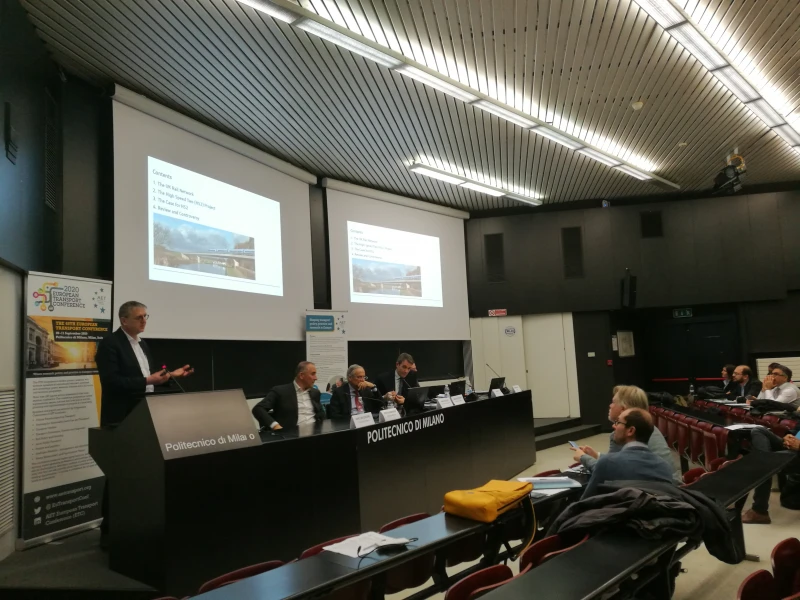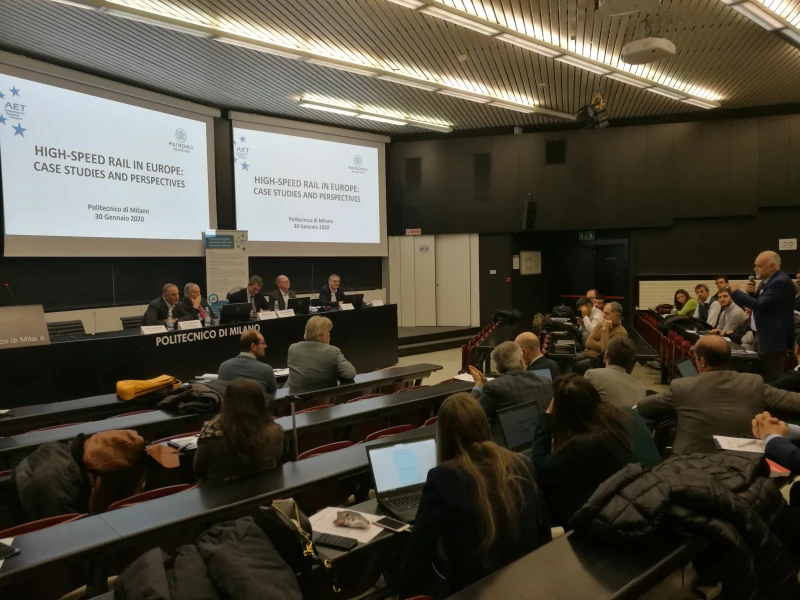-
Past ETC Papers

Browse, search and view papers from the past AET Conferences.
-
Members' Area

AET promotes networking and exchange of ideas, information and opportunities amongst members.
ETC Conference Papers
Conference Past Papers Repository
New home, new habits! Why moving and developing homes are opportunities for sustainable travel behaviour
Seminar
Day 2 (8 Sep 2022), Session 7, NEW HOUSING, 16:30 - 18:30
Status
Accepted, documents submitted
Submitted by / Abstract owner
Tessa Leferink
Authors
Tessa Leferink, Technical University of Eindhoven, NL
Short abstract
Residential relocation can lead to different travel behaviour. This paper describes why and how by reflecting on research and giving examples from practice in the Netherlands and Northern Europe. A conceptual model is introduced.
Abstract
Globally we are in the midst of a climate crisis. Around a quarter of the EU’s total greenhouse gas (GHG) emissions are caused by mobility. Just over 60% of this share is emitted by cars. But there is more to do than turning all cars electric if we want to live in attractive and safe places: we need fewer cars on the road. Particularly in the city the advantages of travelling by foot, bicycle or transit over the private car are evident. Existing research on residential relocation highlights the opportunity for travel behavior change when people move homes. Many new homes the coming decade are planned in urban areas. These new urban developments can therefore accelerate the transition to more sustainable travel. This paper describes how, both from practice and research.
The relationship between particularly land use and transport is well supported by academic evidence. The spatial structure and composition determine travel behaviour, including mode choice (Ewing and Cervero, 2010). This knowledge has become common practice in many cities. Around the world we see higher densities and design concepts like transit-oriented development (TOD) and the 15-minute city being implemented (Moreno et al., 2021). Also, more strict parking policies, communication strategies and car sharing systems are delivered (Van Lierop et al., 2017).
An increasing number of studies indicate residential relocation as a window-of-opportunity for more sustainable travel (Larouche et al., 2020; Klinger & Lanzendorf, 2016). An important topic has been the matter of ‘residential self-selection’: people move to a place they want to live, making the effect of available mobility options and the built environment on travel behaviour smaller. Recent studies using longitudinal data indicate that people’s attitudes change over time in favour of modes that are more accessible in their new built environment, referred to as ‘reverse causality’ (Van de Coevering et al., 2021; Van Wee et al., 2019). This indicates that the long-term effects of for example TOD, may lead to changes in mobility patterns in the long run.
We know that people make different choices when presented with the same travel options, depending on (amongst others) their perceptions, attitudes and previous travel behaviour. For example, researchers found that people in favour of one particular mode are more likely to stick to their initial pattern than more multimodal travellers (KiM, 2017; Zarabi e.a. 2019). Also, the role of price perception and social influence on behavioural intention in emerging technologies like MaaS or sharing vehicles is varies between people (including Alonso-González, e.a., 2020). The extent to which developers and planners match a mobility system of a new development to insights on certain user groups appears to be superficial in practice. For example parking policies in the Netherlands are typically based on the building program only, captured in factors like price or type.
The opportunity is clear as urbanization continues to rise. The Dutch government plans to realize 100,000 new homes annually the coming decade (on a housing stock of 8 million today). Instruments and examples are plenty, although monitoring for example the use of a mobility hub after implementation unfortunately seems uncommon. Particularly local legislation plays an important role in Dutch development practice. An example includes the city of Rotterdam which has recently allowed discounting on parking norms if a developer can e.g. proof to provide car sharing services or offer MaaS-subscriptions to new residents.
In the UK the concept of ‘Garden cities’ has risen. Car dominated new neighbourhoods are still the norm, but voices for change are increasingly loud. An interesting example is the Community Interest Company ‘Transport for new homes’ , which examined plans for 20 Garden Communities in 2020 to highlight the differences between vision and reality. One finding was that the aim for self-sufficiency with amenities close by seems unrealistic as existing local businesses like village shops and pubs are already struggling. Other challenges regarding the implantation or uptake of sustainable mobility systems from practice in Northern Europe include the accessibility of bicycle parking facilities, setting up contracts with shared mobility providers for hubs and EV-charging facilities – the latter particularly in transformation projects.
To conclude, the conceptual model presented in this paper can serve as a shared language between the various stakeholder involved and help them understand better when and how the future inhabitants of their development may be open to change travel behaviour. To truly realize the uptake of sustainable mobility in urban areas, collaboration between policy makers, developers, consultants and city planners is required. The examples of this paper aim to inspire.
Programme committee
Planning for Sustainable Land Use and Transport
Topic
The future of cities: emerging new travel and land use patterns
Documents:

Association For
European Transport
Forester House
Doctors Lane
Henley-in-Arden
Warwickshire, UK
B95 5AW
+44 (0) 15 64 793552
VAT number: 710 1866 64
Conference Supporters & Endorsers




Legal Entity
The Association for European Transport is registered as an Association ('vereniging') with the Chamber of Commerce for Haaglanden in The Netherlands under company number 27170096.
Built on Zenario




